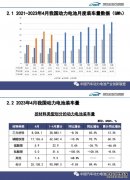清代风格五帝钱!
五帝钱,又称帝王钱。是清朝昌盛的五位帝王(顺治、康熙、雍正、乾隆和光绪)在位期间所铸造的古钱。顺治帝的顺治通宝、康熙帝的康熙通宝、雍正帝的雍正通宝、乾隆帝的乾隆通宝和光绪帝的光绪通宝。这五位帝王相继在位180年,是清朝最辉煌的时期,在位期间国势强盛,出现了前史上出名的“康乾盛世”。
Five emperor money, also known as imperial money. It was forged during the reign of the five prosperous emperors of the qing dynasty (shunzhi, kangxi, yongzheng, qianlong and guangxu). Emperor shunzhi's shunzhi tongbao, emperor kangxi's kangxi tongbao, emperor yongzheng's yongzheng tongbao, emperor qianlong's qianlong tongbao and emperor guangxu's guangxu tongbao. The five emperors reigned for 180 years, the most glorious period of the qing dynasty.

雍正通宝是清代钱币,用黄铜铸造,做工精良,雍正通宝现为五帝钱的一部分,五行属土,有辟邪的功效。始铸于雍正元年(1723年),是继顺治、康熙后的第三代清钱币。
Yongzheng tongbao is a coin of the qing dynasty, which is cast with brass and is well made. Yongzheng tongbao is now a part of the money of the five emperors. First cast in the first year of yongzheng (1723), is the third generation of qing COINS after shunzhi, kangxi.
光绪通宝是清代钱币之一,清德宗光绪年间(1875年-1908年)铸造。光绪通宝面文楷书或楷兼隶、楷兼宋三体;背文满、回文记局、记年、记吉语、记批次等多种形式。
Guangxu tongbao is one of the COINS of the qing dynasty. Guangxu tongbao face regular script or kai and li, kai and song three body; Back full, palindrome bureau, record years, record auspicious language, record batch and other forms.
康熙通宝为清代钱币,铸于清圣祖康熙年间(1662年~1722年)。币材多呈青白色,即用铜锡合金,通称大白钱;也有红铜及黄铜的省局铸钱。
Tongbao is a coin of the qing dynasty, which was cast in the reign of emperor kangxi (1662 ~1722). COINS are mostly blue and white, namely copper and tin alloy, known as white money; There are also provincial copper and brass COINS.
乾隆通宝是乾隆时期的流通货币, 乾隆皇帝在位的60年里施展其“文治武功”的治国策略,创造了封建社会里最后一个辉煌盛世,之后民间便盛传佩带“乾隆通宝”铜钱可驱灾辟邪,又因乾隆二字谐音“钱隆”而备受后世藏家所喜爱的钱币。
Qianlong TongBao is the qianlong period of the currency, 60 years of the reign of the qianlong emperor exert its "tai temple" governing strategy, create the brilliant outstanding achievement in the feudal society in the last millennium, after folk rumours that wear "qianlong TongBao" copper can drive to ward off bad luck, and because of the word "qianlong homophonic" Qian Long "and the later collectors favorite COINS.
顺治元年,(1644年)清军入关,入主中原。同年,迁都北京,在北京设工部宝泉局,户部宝源局。开铸货币,当然还有全国各地各局。(一千铜钱称为一串) 顺治皇帝在位短暂的18年时间,所以顺治通宝存世量较少,现如今更是难求一枚。
In the first year of shunzhi (1644), the qing army entered the pass and entered the central plains. In the same year, the capital moved to Beijing, in Beijing set up the ministry of work treasure spring bureau, the department of household treasure source bureau. And, of course, all over the country. (a thousand copper COINS are called a bunch.) during the reign of emperor shunzhi, which lasted only 18 short years, the number of shunzhi tongbao is small.

古代民间有用古钱币驱邪的习俗。通常将方孔通宝钱(不拘大小)用红线悬于颈间,因为铜钱历经万人手之实,汇集百家之阳气,可抵御邪祟鬼魂。而“五帝钱”,相对于普通古钱,更多汇聚了华夏大地之灵气、中华民族之灵气、真命天子之灵气、传承百家之灵气。因为“五帝”在位期间,国运昌盛,帝王独尊,百姓安居乐业,国富民强,另外在“五帝”执政期间,钱币制作精良,流通时久,因此除了避邪之外,还能祈福、镇宅、化煞和旺财。
Ancient folk use of ancient COINS to ward off evil customs. Usually the square hole tongbao money (regardless of size) with red line hanging in the neck, because copper money after ten thousand hands of the reality, the collection of hundred Yang qi, can resist evil spirits. The "five emperors' money", compared with the ordinary ancient money, more gathered the spirit of the Chinese land, the spirit of the Chinese nation, the spirit of the right man, and the spirit of inheriting the hundred schools of thought. During the reign of the "five emperors", the prosperity of the country, the emperor alone, the people live and work in peace and contentment, the country is rich and the people are strong. In addition, during the reign of the "five emperors", COINS are well made and circulate for a long time.

- 新闻
- 房产
- 汽车
- 娱乐
- 体育






















